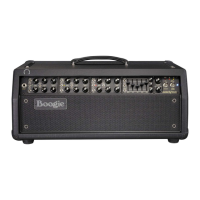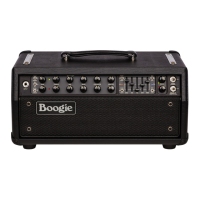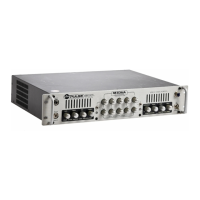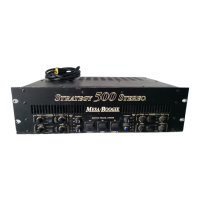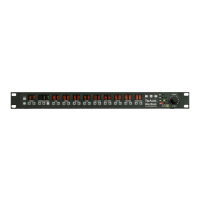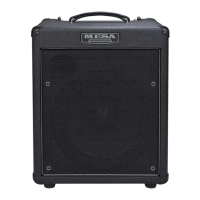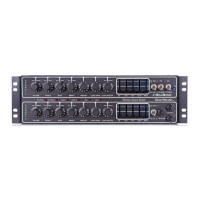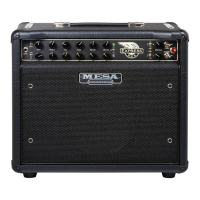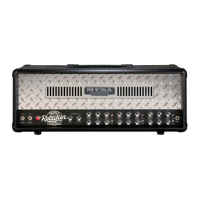PAGE 31
but it is often eective and a welcome feature to try for noise issues when you’re anxious to get rolling in the
Studio or do a timely Sound Check at a venue.
CAB SELECT
These three 8-position rotary controls select the Cabinet IRs you will trigger in each of the amplifier Channels
when connected to the DIRECT OUT and/or the HEADPHONE Output.
Having separate rotary controls for each Channel allows you to set the Channels dierently and optimize each
Channel’s gain region, sound style, and response with a Cabinet best suited to what you’ve dialed up with the
Mode Select, GAIN, Tone, and MASTER controls. This kind of flexibility puts the MARK VII in a new category
in terms of direct recording with a tube amp, enabling you to further authenticate your footswitchable sounds
with a virtual Cab/IR that will not just broadcast them but rather showcase them.
USB PORT
This standard USB port accepts a 2.0 A to B cable (not included) and is provided for connecting to a computer
for managing the IR File directory. If you don’t have a 2.0 USB Cable around the house, it’s an easy Cart add
at many online Retailers or available in most Music or Tech stores.
NOTE: Important!! Don’t forget to eject the CabClone IR Drive from your computer’s Desktop/File Manager just as you would
a Flash Drive when you are done manipulating the IRs.
HEADPHONES
A standard 1⁄4” stereo phono jack provides the Output for Headphones. This allows the MARK VII to be not
only a wonderful live performance and recording ally but also a great resource for “Silent” practicing with a
tube amp sound and feel.
Like the Balanced XLR DI OUTPUT, the volume level at the HEADPHONES Output is determined by the LEVEL
control. It’s not a problem that the two share the LEVEL Control, as the XLR DI OUTPUT’s feed is almost always
sent to something with an Input Level control and EQ, and also, the signal level at the 1⁄4” HEADPHONES Output
has been attenuated/optimized for personal monitoring with headphones.
That said, the impedance of the headphones (and their eciency) can have an impact on the Headphone
volume level that is possible as well. Since these factors can be as much a consideration with headphones
as their sound, and since there seems to be variance in impedance and eciency when choosing brands or
models, it is wise to try headphones with your MARK VII before you buy …or at least save the purchase receipt
and get acknowledgment from the retailer you can swap or return them in the event they do not perform as
you had hoped.
And finally, the HEADPHONES Output will present a signal regardless of what other Outputs are in use on the
amplifier.
NOTE: When using Headphones with no speaker connected, it’s best to keep your Channel Master levels below 11 o’clock.
You should be able to get plenty of output level with the Input and Output Controls, and it will help reduce wear and tear
on your output tubes.
SPEAKERS OUTPUTS
These jacks deliver your amplifier’s power to your speakers. Two 8 OHM and two 4 OHM OUTPUTS are pro-
vided to accommodate a wide range of cabinetry options.
When using a single 8 Ohm MESA cabinet, you will most often want to use the 8 Ohm Output. This provides
a proper impedance match, and in the 90 Watt Power Mode, this setup will deliver the maximum power and
headroom.
NOTE: As mentioned earlier in the Multi-Watt Power Switch section, for a bolder, punchier, and slightly brighter response
in the 45 Watt and 25 Watt power settings, try moving the speaker cabinet from the 8 OHM SPEAKER Output over to the
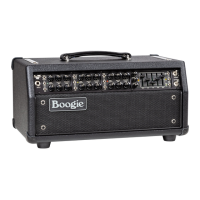
